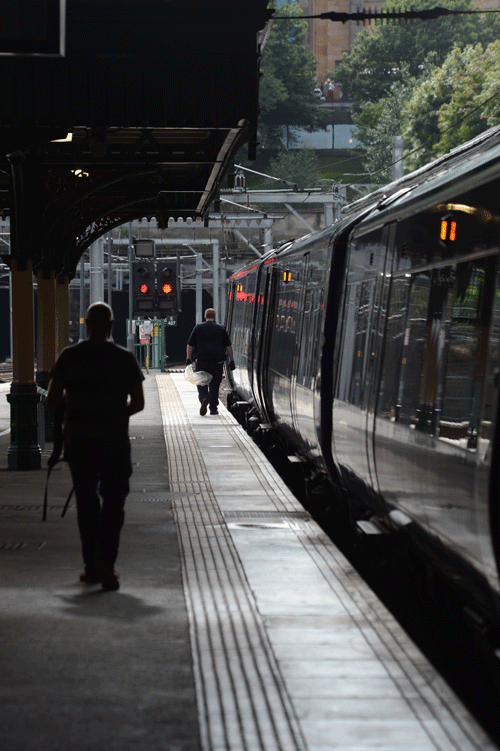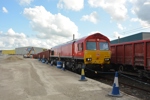Historically, relationships between clients and suppliers have tended to be rather straightforward: the client provides a brief and it’s up to the supplier to deliver it at the agreed cost and time. But while that simple approach is acceptable for - say - painting a station’s signage, when it comes to major projects it can be very far from ideal.
When High Speed 1 was being designed and built a vast range of disciplines had to work closely together in order for it to be completed on time and within budget. Planners, civil, electrical and mechanical engineers, signalling experts and people from many other professions were all vital. Beyond the skills needed, however, was the wider supply chain and delays in any critical aspect at the wrong time can ripple out over the course of a project. Here, the traditional client-supplier relationship can lead to a tendency to work too hastily or cheaply to hit deadlines, which can have a long-term detrimental effect on a project.
High Speed 1 involved a great deal of collaborative working, with Rail Link Engineering set up to design and manage the project in collaboration with contractors and the supply chain. The result was a £5.8 billion railway delivered on time and within budget. Risks were shared and constant communication about progress and any technical issues allowed the whole team to create solutions and, if necessary, adjust their plans.
Progress was spurred on in 2011 when the Sir Roy McNulty Value for Money Report identified the opportunities for more collaborative working and its relative lack of application at the time. The process was helped by the creation of British Standard BS 11000 in 2010, which set out how organisations can collaboratively manage a project.
Network Rail was quick off the mark, working with business standards company BSI and the Institute for Collaborative Working to compare BS 11000’s standards with NR’s existing processes. A Relationship Management Plan (RMP) was created and then customised for specific projects. All companies work slightly differently, so an RMP had to be developed for each supplier. In turn, in order to embrace collaborative working, each supplier had to produce its own RMP to detail how it would work with NR.
Shifting cultures
There has been - perhaps unfairly - a view within the supply chain that the wider railway is rather uncooperative when it comes to working collaboratively. Historically, NR had taken an ad hoc and inconsistent approach to such working, so when it began its drive towards greater engagement the suppliers were cynical. However, a long process of discussion between NR and its suppliers began to start shifting perceptions - and it is telling that some of Britain’s most successful rail projects in recent years have benefitted from this approach.
Reading station’s upgrade (see pages 6-7) is a classic case in point. But if the Reading project was demanding on those involved, London’s Crossrail is at a higher level still. There are interfaces with railways, roads, utilities and local authorities to consider, and the engineering challenges of driving a new, largely underground, railway through the centre of London are truly vast. Consider the complexities of boring a new tunnel. Staff, equipment and supplies have to be sourced, logistics bases have to be created, extensive traffic management plans developed to limit disruption to nearby businesses and residents and costs have to be kept under constant control while still hitting project milestones.
From an early stage Crossrail championed - and indeed made it a requirement of all organisations involved in the project - to embrace collaborative working. It is hard to see how a traditional client-supplier relationship could be delivering such a complex project without this approach. Under the banner of Innovate18, a fundamental tenet is that all parties involved must genuinely believe that their organisation welcomes the generation of ideas from everyone and everywhere.
Another project which is using - and probably demands - a collaborative approach is the Edinburgh-Glasgow Improvement Programme (EGIP), a massive £742 million programme in which the Cumbernauld-Glasgow line will be electrified, Edinburgh Waverley will undergo station alterations, including platform extensions, and more. It is due to be completed in March 2019, with the redevelopment of Glasgow Queen Street.
The potential for disruption and delay is vast, but so far progress has been good. The redevelopment of Haymarket station, Edinburgh, was completed in 2014, and since work began in 2012 the Cumbernauld electrification has been completed along with a host of less high-profile but vital works. The project continues to achieve its plans, and is a model of co-operation between NR, its suppliers, train operators and the Scottish Government.
How far can collaborative working go? These major projects have proved its worth. Alliances between NR and train operators - most notably ScotRail and South West Trains - have demonstrated what can be achieved when conflict and tension between track owner and train operators is reduced. Equally, the North Staffordshire Alliance overseeing upgrades on the West Coast Main Line is achieving success - but more can be done. In terms of the day-to-day running of the railway it seems apparent that closer working between track authority, suppliers and train operators can solve - or at least ease - problems before they cause massive disruption.
As the UK rail sector gains more experience in working together the benefits should grow and become more apparent. At a time when the rail industry - and by extension its supply chain - is under greater scrutiny over costs and meeting deadlines than ever before, collaborative working will become increasingly vital.
Lessons are being learned and applied across the industry, and with BS 11000 set to be the basis of an international equivalent, all areas of the UK’s rail industry could apply their expertise on this around the world. Closer to home, though, High Speed 2 is on the horizon - and if that much-needed railway is to achieve its full potential, collaboration will have to be stronger than ever before.

















Login to comment
Comments
No comments have been made yet.